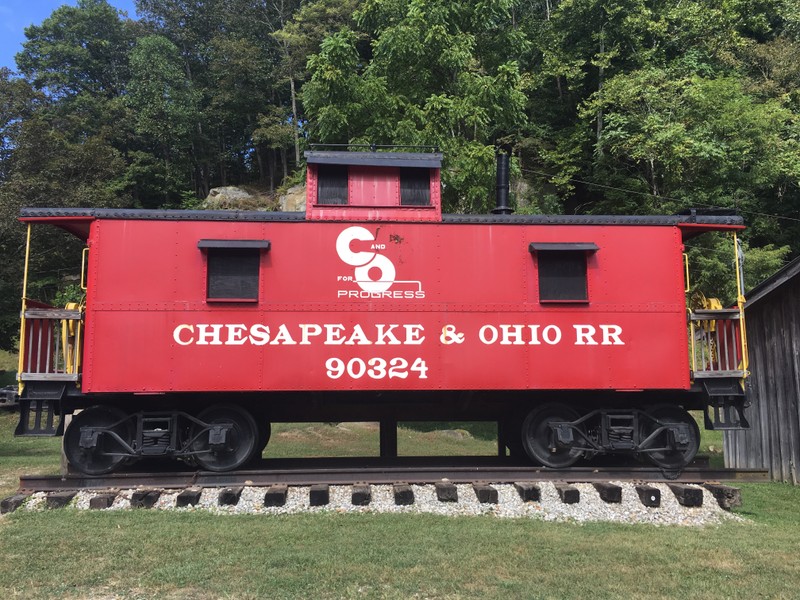C&O Caboose #90324
Introduction
Author-Uploaded Audio
00:00 / 00:00
Audy Perry talks about his father obtaining the C&O caboose
Text-to-speech Audio
Images
This caboose was originally used by the Chesapeake & Ohio Railroad, the region's most important early railway.

For many years this caboose served as the ticket booth at Marshall University's Fairfield Stadium.

Backstory and Context
Text-to-speech Audio
Cabooses were an important part of the railroad industry for many years. They were first developed around the 1840s and continued to be used by some railroads until the 1980s. Cabooses had several different purposes. They provided a place for crew members to eat, sleep, and work in. They contained bunk beds, a stove, a toilet, and space for storing tools. Cabooses usually housed a conductor, a brakeman, and a flagman. The conductor had to look out all the windows and doors to inspect the train and make sure all of its parts were working correctly. The brakeman had to climb on top of each train car and turn a wheel to activate the brakes. The flagman walked behind the caboose whenever the train was stopped and carried lanterns or flags to warn upcoming trains that the train in front was not moving. Eventually new technologies such as automatic brakes and signals eliminated the need for these jobs.
The caboose seen here is from the Chesapeake & Ohio Railroad (C&O), the most influential railroad in the area’s history. The line was built in many phases, with most of the work done from 1869-1873. It stretched from the coast of Virginia, through the Appalachian Mountains, and ended at the Ohio River in West Virginia (in later years it would expand farther). The C&O primarily transported coal from West Virginia to eastern Virginia, where it could then be shipped around the world. During the 1870s the new city of Huntington grew around the railroad’s terminus along the river. It was named after Collis P. Huntington, the C&O’s president and chief financier. During the mid-1900s the C&O merged with several other railroad companies and today is now part of CSX.
This particular caboose stood for many years in front of Marshall University’s Fairfield Stadium, the school’s football stadium from 1927-1990. It was painted green and white and served as the ticket booth. After the stadium closed the Perry family acquired the caboose and brought it to Heritage Farm. It was later repainted to resemble its original C&O appearance.
Cite This Entry
Straley, Steven Cody. "C&O Caboose #90324." Clio: Your Guide to History. July 1, 2020. Accessed January 14, 2025. https://theclio.com/entry/86087
Sources
“A Brief History of the Caboose.” Union Pacific. Accessed September 30, 2019. https://www.up.com/heritage/history/caboose.index.htm.
“History of the C&O Railway.” Chesapeake and Ohio Historical Society. Accessed September 30, 2019. https://cohs.org/history/.
Kelly, John. “The colorful caboose.” Trains. May 1, 2006. Accessed September 30, 2019. http://trn.trains.com/railroads/railroad-history/2006/05/the-colorful-caboose.
Image courtesy of the author.
Image courtesy of Heritage Farm Museum & Village.


